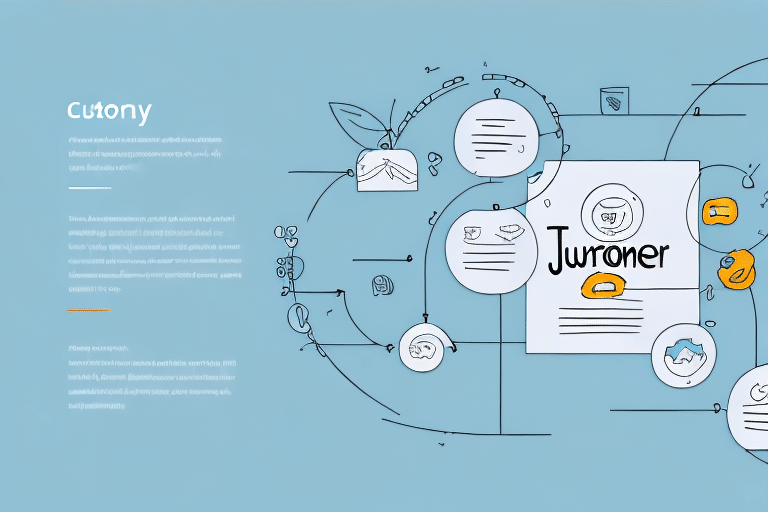Introduction to Customer Retention Strategies
In today's highly competitive business environment, customer retention is often touted as the key to success. Organizations that prioritize customer retention strategies are able to achieve greater customer loyalty, higher revenue, and increased profitability over the long term. According to a Harvard Business Review study, increasing customer retention rates by just 5% can lead to an increase in profits of 25% to 95%.
Understanding Customer Retention and Its Significance
Customer retention refers to the activities and actions companies take to reduce the number of customer defections. The goal is to retain as many customers as possible while minimizing the cost of attracting new ones. A loyal customer base not only ensures steady revenue but also acts as an advocate for the brand.
Retaining existing customers is significantly more cost-effective than acquiring new ones. According to Bain & Company, acquiring a new customer is anywhere from five to 25 times more expensive than retaining an existing one. Additionally, loyal customers tend to spend more over time, contributing to increased profitability.
Types of Customer Retention Strategies
Loyalty Programs
Loyalty programs reward customers for their repeat business. By offering points, discounts, or exclusive offers, companies can incentivize customers to continue choosing their products or services.
Personalized Outreach
Personalized marketing efforts, such as targeted emails and customized recommendations, make customers feel valued and understood, increasing their likelihood of staying loyal.
Referral Programs
Encouraging existing customers to refer new ones through incentives can help expand the customer base while reinforcing loyalty among current patrons.
Gamification
Incorporating game-like elements—such as rewards, challenges, and leaderboards—into the customer experience can make interactions more engaging and fun. This strategy has been effectively used in apps and loyalty programs to enhance customer engagement.
Key Factors for Successful Customer Retention
- Effective Communication: Timely and relevant communication ensures that customers feel informed and appreciated.
- Consistent Engagement: Regular interactions through various channels help maintain a strong relationship with customers.
- Personalization: Tailoring experiences to individual customer preferences increases satisfaction and loyalty.
- Customer Feedback: Actively seeking and acting on customer feedback demonstrates a commitment to improvement and customer satisfaction.
- Continuous Improvement: Regularly refining products, services, and strategies based on data and feedback keeps the offerings relevant and valuable.
The Impact of Technology on Customer Retention
Technology plays a pivotal role in modern customer retention strategies. Tools such as Customer Relationship Management (CRM) systems, advanced analytics, and automated marketing platforms enable organizations to understand and anticipate customer needs effectively.
With the help of data analytics, companies can track customer behavior, preferences, and purchase history to create personalized experiences. For instance, platforms like Salesforce CRM provide businesses with comprehensive insights that drive informed decision-making.
Moreover, automated marketing tools facilitate timely and relevant communication through personalized emails, targeted ads, and customized content, enhancing the overall customer experience.
Challenges in Implementing Effective Customer Retention Strategies
While the benefits of customer retention are clear, implementing effective strategies comes with its own set of challenges:
- Data Management: Collecting, storing, and analyzing customer data securely and efficiently can be complex.
- Identifying the Right Incentives: Determining what rewards or incentives will effectively motivate customers to stay loyal requires careful analysis.
- Maintaining Consistent Engagement: Keeping customers engaged without being intrusive is a delicate balance.
- Measuring Effectiveness: Establishing the right metrics and tracking them accurately to assess the success of retention strategies is essential.
Addressing these challenges involves investing in the right technology, training staff, and continuously refining strategies based on feedback and data analysis.
Measuring the Effectiveness of Customer Retention Strategies
To ensure that customer retention efforts are yielding the desired results, it is crucial to measure their effectiveness using various metrics:
- Customer Lifetime Value (CLV): Measures the total revenue a business can expect from a single customer account throughout the business relationship.
- Repeat Purchase Rate: Indicates the percentage of customers who make more than one purchase.
- Customer Churn Rate: Represents the percentage of customers who stop using a company's products or services over a specific period.
- Net Promoter Score (NPS): Gauges customer satisfaction and loyalty by asking customers how likely they are to recommend the company to others.
Regularly tracking and analyzing these metrics helps organizations identify trends, evaluate the success of their strategies, and make informed adjustments to enhance retention efforts.
Case Studies on Successful Customer Retention Strategies
Starbucks
Starbucks' loyalty program offers rewards, personalized offers, and exclusive benefits, encouraging repeat visits and fostering a strong customer community.
Zappos
Zappos has built a reputation for exceptional customer service, offering free shipping, easy returns, and 24/7 customer support, which has resulted in a highly loyal customer base.
Amazon
Amazon Prime is a standout example of a successful retention strategy, providing members with benefits like free two-day shipping, access to streaming services, and exclusive deals, thereby creating a compelling reason for customers to maintain their membership.
Netflix
Netflix uses personalized recommendations based on viewing history to enhance user experience and keep subscribers engaged with relevant and appealing content.
Best Practices for Designing Effective Customer Retention Programs
- Develop a Clear Strategy: Define the goals, target audience, and key performance indicators (KPIs) for your retention efforts.
- Personalize Customer Experiences: Use data to tailor interactions and offerings to individual customer preferences.
- Leverage Customer Feedback: Actively seek feedback through surveys, reviews, and direct communication to inform strategy adjustments.
- Segment Your Audience: Group customers based on behavior, preferences, and demographics to create more targeted retention initiatives.
- Set Measurable Goals: Establish clear, quantifiable objectives to track progress and assess the effectiveness of retention programs.
- Continuously Optimize: Regularly review performance data and customer feedback to refine and improve retention strategies.
Conclusion: The Importance of Investing in Customer Retention Strategies
Investing in effective customer retention strategies is essential for sustainable business growth and profitability. By focusing on customer engagement, personalized outreach, and building long-term relationships, organizations can cultivate a loyal customer base that not only ensures repeat business but also acts as a powerful advocate for the brand.
Moreover, prioritizing retention can lead to significant cost savings. As mentioned by Forbes, retaining existing customers is more cost-effective than acquiring new ones, allowing businesses to allocate resources more efficiently and maximize return on investment.
In summary, a strategic focus on customer retention not only enhances customer satisfaction and loyalty but also drives long-term business success.








